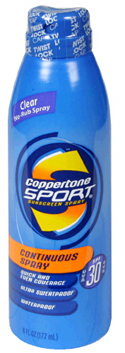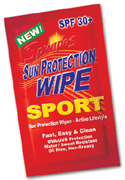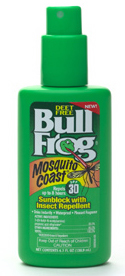 As sports go, golf seems to be one of the more benign. After all, nobody’s throwing a ball 100 miles per hour at you; no 350-pound lineman is trying to dismember you; nobody in the cart next to yours is rubbing paint at 200 miles an hour.
As sports go, golf seems to be one of the more benign. After all, nobody’s throwing a ball 100 miles per hour at you; no 350-pound lineman is trying to dismember you; nobody in the cart next to yours is rubbing paint at 200 miles an hour.
When it comes to the lethal dangers in our game most people think of lightning or cart accidents. But that’s not true. The dangers of prolonged UV exposure from the sun are greater than ever. More than 60,000 people a year are diagnosed with malignant melanoma – the deadly kind of skin cancer. Here are some things you can do to protect yourself.
Because golf is a sport for a lifetime and the damaging effects of the sun are cumulative, golfers have to be consistent and diligent in protecting themselves. And if you think a lifetime in the sun has no effect, check out the skin on the necks of Tom Watson and Tom Kite next time you see them close up on TV.
Skin Protection
Let’s start with some scary facts from the Skin Cancer Foundation:
- One in five Americans and one in three caucasians will develop skin cancer in the course of a lifetime.
- More than 90% of all skin cancers are caused by sun exposure.
- Fewer than 33% of adults, adolescents, and children routinely use sun protection.
- A person’s risk for skin cancer doubles if they have had five or more sunburns.
 The first line of protection is sunscreen. Yes, I know it’s a hassle to deal with, but it’s come a long way from the greasy white goo you slathered on so you could smell like a coconut. Most manufacturers of the stuff now have a “sports” line that isn’t greasy and can be applied as a clear lotion, spray, or with disposable wipes.
The first line of protection is sunscreen. Yes, I know it’s a hassle to deal with, but it’s come a long way from the greasy white goo you slathered on so you could smell like a coconut. Most manufacturers of the stuff now have a “sports” line that isn’t greasy and can be applied as a clear lotion, spray, or with disposable wipes.
Coppertone is an old favorite brand of mine and I’ve begun using their Sport spray-on sunscreen. It protects against both UV-A and UV-B rays and that’s important. An SPF factor (“Sun Protection Factor”) of 15 is the minimum and 30 or higher is better. It’s best to apply it a couple hours before you go into the sun and then reapply it every two hours. So that means a quick spray and rubdown at the turn. A 6-ounce bottle costs about $10.
In addition to the spray, you can also find sunscreen in a small tube like chap-stick that’s good for your lips, nose, and ears and in a larger deoderant-like stick that’s also convenient to rub on. I just like the spray. It’s clear, smells OK, and really doesn’t make my hands slippery.
Obviously, there are tons of manufacturers out there and it wouldn’t hurt to shop around for one that smells good and works for you. But here’s a couple more variations I thought interesting…
 A very convenient product, especially if you carry your bag, is something called Spwipes. It’s basically a pre-moistened towelette in a foil packet – something like the wash-up packets they give you at a rib joint.
A very convenient product, especially if you carry your bag, is something called Spwipes. It’s basically a pre-moistened towelette in a foil packet – something like the wash-up packets they give you at a rib joint.
Their “sport” version is a 5″ x 8″ towel, although they also market a larger 8″ x 12″ version. Both retail for about a dollar a packet.
The advantage, obviously, if you carry your bag is that you just have to throw a couple of the packets into a pocket and you’re good to go. No spills, no mess, as it were. Plus on a hot day the touch of alcohol in these products feels pretty refreshing.
 If bugs are an issue where you play, Bull Frog Mosquito Coast might be worth a look. It combines an SPF-30 sunscreen with a non-DEET insect repellent good up to eight hours. Made by Chattem, it’s a spray-on product that doesn’t smell bad and doesn’t need to be washed off as soon as you aren’t at risk for bites. It comes in a 4.7-ounce bottle and costs about $12.
If bugs are an issue where you play, Bull Frog Mosquito Coast might be worth a look. It combines an SPF-30 sunscreen with a non-DEET insect repellent good up to eight hours. Made by Chattem, it’s a spray-on product that doesn’t smell bad and doesn’t need to be washed off as soon as you aren’t at risk for bites. It comes in a 4.7-ounce bottle and costs about $12.
Eye Protection
It isn’t just your skin that accumulates sun damage. So do your eyes. Over time, cataracts can develop – a clouding of the eye’s lens. It’s even possible to develop a temporary condition called photokeratitis – sunburn of the cornea.
The obvious solution is to wear sunglasses. But not all are created equal. While there are many sunglasses marketed to golfers right now for their supposed enhanced ability to read greens, the important thing is to make sure that any sunglasses you choose can claim 100 percent UV protection.
In the End…
The “farmer’s tan” most golfers sport – tan arms and legs, white feet and body – isn’t just silly looking. Over time it can lead to serious health problems. So go shopping for the sunscreen that smells the best to you and then use it. And don’t forget the top of your ears!
How important is it for the sunglasses to be Polarized?
Some important things which were omitted:
1.Sunscreens need to block both UVA and UVB wavelenghts, most do, but be sure. If it doesn’t say it on the packaging, I’d buy another brand.
2. Sunscreens are chemical blockers and require about 30 minutes before they start working. Keep that in mind before applying. Zinc and titanium oxides are physical blockers and work immediately. Cover as much area as you can.
Polarized sunglasses are not essential. The most important thing with sunglasses is blocking out UVA and to a certain extent UVB (the harmful effects of UVB is not yet known – but, if it can harm your skin, theoretically, your eyes should be at risk too). Polarized lenses are nice to have, as it tends to block out more light, but you do pay more for this feature ($50+ depending on the manufacturer).
One other side benefit to sunglasses is that they generally block out sunlight and glare, making your eyes do less “work” (i.e., makes you less tired). If you spend time out in very bright sunny environments, sunglasses are definitely recommended.
Great comments gascan and Hans.
My personal opinion is that polarized sunglasses work great around water and while driving. But playing golf I don’t seem to get the glare they seem to help block. But it is important to get the kind that bock both kinds of rays… that’s the critical thing.
I also find I do with sunglasses what I see a lot of on TV… take them off to hit and putt, then put them back on the rest of the time.
Having used polarized lenses for fishing all my life, I will say this: sometimes grass can get really shiny, and as such, polarized lenses can help, albeit to a much lesser degree than those designed for dealing with reflections of water when chasing after wily bonefish…